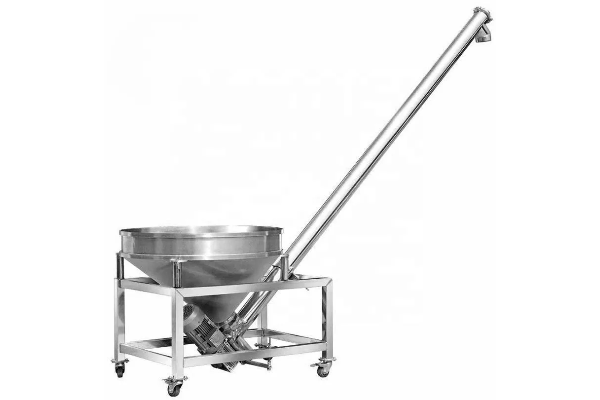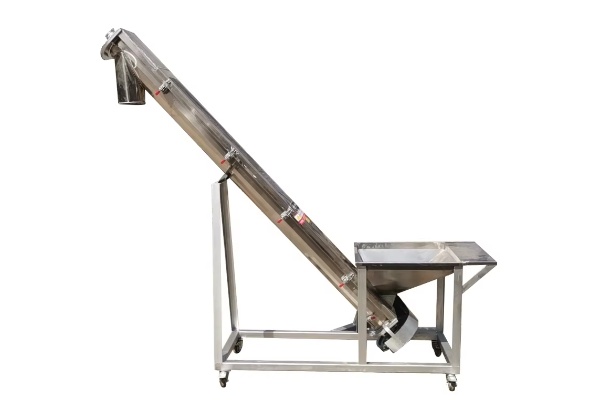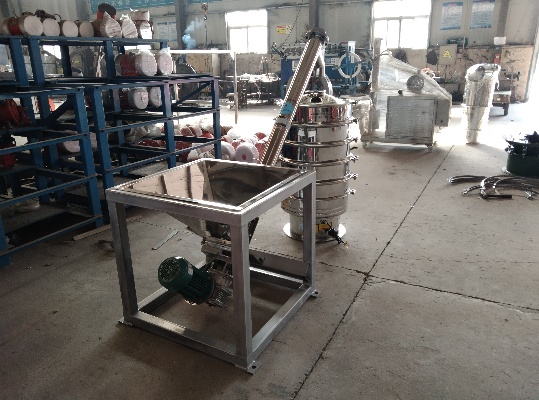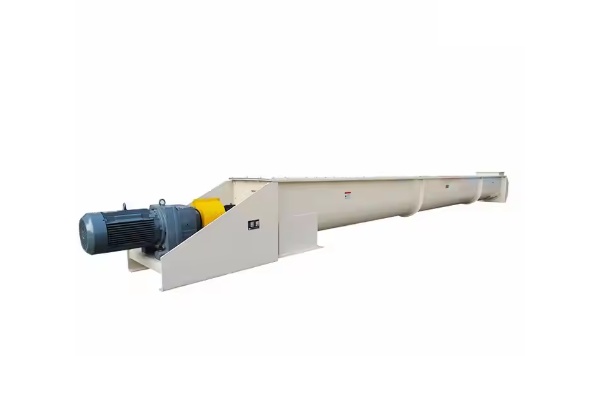What are the different types of screw conveyors?
Monday November-03 2025 11:09:15
The function of screw conveyors is to achieve axial displacement of bulk materials in a specific space through rotating spiral blades. This type of equipment has many specific types, covering various structural forms such as shaft and shaftless, horizontal and inclined, tubular and U-shaped trough, etc., to adapt to different material characteristics and conveying environments. In terms of material handling capacity, screw conveyors can cope with material conveying needs ranging from tens of kilograms per hour to hundreds of tons per hour. Its single-machine conveying distance is usually between several meters and tens of meters. The common single-machine horizontal conveying distance can reach 30 meters, and the vertical lifting height can reach 20 meters.
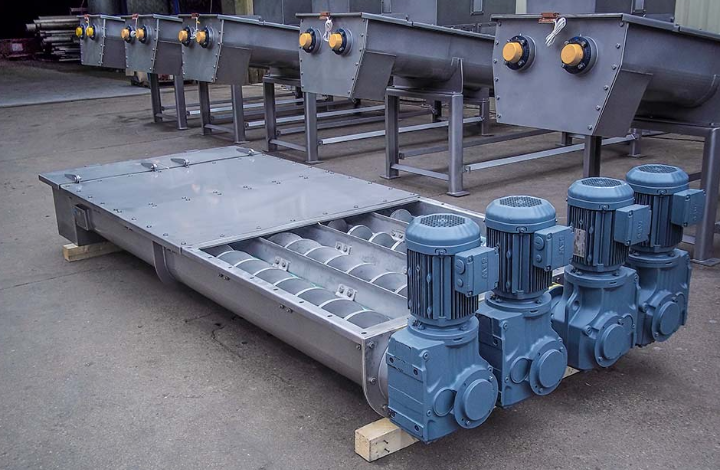
What are the types of screw conveyors?
Screw conveyors are a common material conveying equipment. Its core mechanism is to push the material axially in a closed trough or pipe through a rotating spiral blade. This equipment is used in many industrial fields because of its relatively simple structure, easy sealing and ability to achieve multiple conveying angles. According to its structural characteristics, functional design and specific application scenarios, screw conveyors can be divided into many types.
Screw conveyors can be categorized into the following types based on their design:
Screw conveyors with shaft
Structural characteristics: The existence of the central shaft provides stable support for the spiral blades, making the rigidity of the entire spiral body better. The spiral blades are usually continuous solid blades, but in some specific applications, belt, paddle or variable pitch blades may also be used. The bearing supports are located at both ends of the spiral shaft, and sometimes intermediate bearings are also set in longer conveyors.
Working principle: When the drive device drives the spiral shaft to rotate, the spiral blades generate thrust on the material in the trough body, prompting the material to move along the spiral shaft. Under the action of the rotating blades, the material is affected by its own gravity, friction with the trough wall, and friction with the spiral surface, thereby realizing axial conveying.
Applicable materials: This type of conveyor is suitable for conveying powdery, granular and small block bulk materials with good fluidity, non-sticky, not easy to entangle and not high abrasiveness. Common materials include cement, fly ash, grains, sand, small granular plastics, flour, etc. Due to the existence of the central shaft, for fibrous, easy to entangle or viscous materials, the material may be wrapped around the shaft or blocked.
Advantages: mature structure, relatively moderate manufacturing cost, easy maintenance, and controllable sealing. It has high reliability when conveying non-sticky materials.
Limitations: Not suitable for conveying sticky, easy-to-wind, bulky or high-water-content materials, the center shaft may hinder the flow of materials or cause blockage. The presence of the intermediate bearing may also become an obstacle or wear point for the flow of materials.
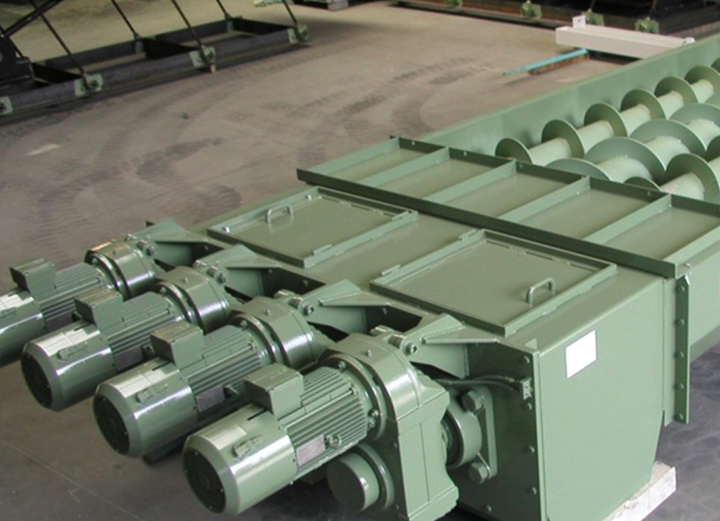
Shaftless screw conveyors
Structural characteristics: There is no center shaft, and the spiral blades (usually thick and tough materials such as high-strength steel or special alloy steel) slide or roll directly on the inner wall of the U-shaped trough. In order to reduce wear, the inner wall of the U-shaped trough is usually paved with wear-resistant liners such as ultra-high molecular weight polyethylene or high-chromium cast iron. The two ends of the spiral blade are connected to the driving end and the non-driving end through a special structure.
Working principle: The drive device drives the spiral blade to rotate, and the blade directly pushes the material forward in the trough. Since there is no obstruction of the center shaft, the material can flow more freely in the trough.
Applicable materials: This type of conveyor shows advantages in handling materials that are difficult for traditional shafted screw conveyors to deal with. It is particularly suitable for conveying materials with strong viscosity, high moisture content, easy to entangle (such as fibers, cloth strips, plastic bags), easy to agglomerate or blocky. Typical applications include kitchen garbage, urban sludge, livestock and poultry manure, filter cakes, food waste, dregs, etc.
Advantages: It significantly solves the problem of material entanglement and blockage, and reduces the workload of clearing and maintenance. The conveying channel is spacious and has good adaptability to large pieces of materials. The noise during operation is relatively low.
Limitations: Due to the lack of central shaft support, the spiral blade may be at risk of deflection in some cases, especially in situations where the conveying distance is long or the material density is high. The manufacturing cost may be higher than that of shaft screw conveyors of the same specifications.
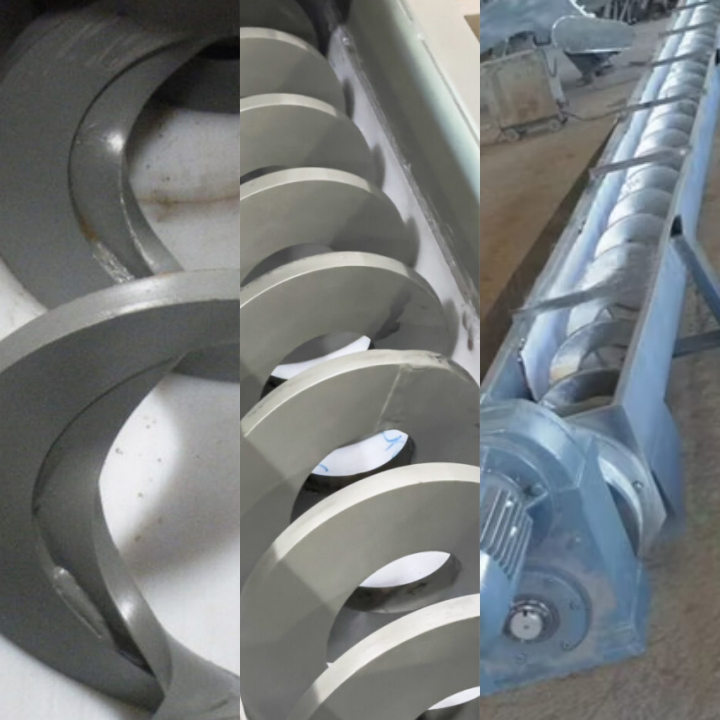
U-shaped trough screw conveyors
Structural characteristics: There is usually a removable cover above the trough body for easy inspection, cleaning and maintenance. The trough body material is mostly carbon steel or stainless steel.
Advantages: Simple structure, relatively low manufacturing cost, easy to install and maintain, and easy to observe the material status.
Applicable materials: Widely used for conveying various powdery, granular and small bulk materials, especially for occasions that do not require strict sealing or require frequent cleaning.
Limitations: The sealing performance is not as good as the tube type, and it may cause environmental pollution when conveying materials that generate a lot of dust. It is not suitable for conveying toxic, harmful or highly volatile materials.
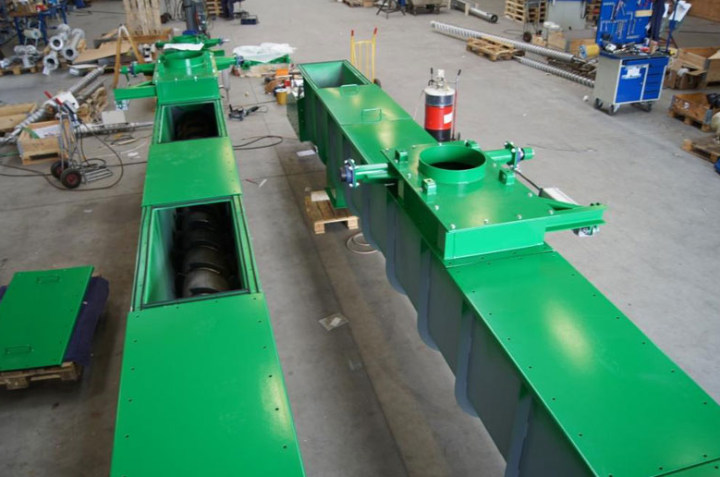
Tubular screw conveyors
Structural characteristics: The shell is a circular tube, usually welded by steel pipes or stainless steel pipes. The material is fed from one end and is pushed by the spiral in the pipe to the other end for discharge.
Advantages: It has excellent sealing performance and can effectively prevent dust leakage and external pollution from entering. It is especially suitable for occasions with high requirements for environmental cleanliness or conveying toxic, harmful and volatile materials. At the same time, the tubular structure also has good strength and rigidity.
Applicable materials: Widely used in food, fine chemical and other industries to convey various powdery and granular materials, such as flour, starch, pharmaceutical raw materials, plastic particles, activated carbon, etc.
Limitations: Due to the complete closure, maintenance and cleaning are not as convenient as U-shaped troughs, and the handling is also more complicated when the material is blocked.

Screw conveyors can be categorized into three common types based on the flow path:
Horizontal Screw Conveyor
Structural Features: The horizontal screw conveyor is a basic type, with core components including a drive unit, a rotating screw shaft, and a U-shaped or tubular trough. Its structure is designed for horizontal or near-horizontal installation (inclination angle usually less than 20°), relying on the thrust of rotating blades to propel material forward along the trough bottom.
Applicable Materials: Suitable for most powdery, granular, and small lump non-sticky or semi-sticky bulk materials, such as cement, grain, coal powder, sand, and fertilizer. For fragile, easily abrasive, or contaminated materials, special materials or sealing structures are required.
Advantages: Its main advantages are good sealing performance, preventing dust emissions and protecting the environment; compact structure, allowing for loading and unloading at multiple points, and flexible layout; safe and reliable operation, and convenient maintenance and cleaning.
Limitations: Limitations include limited conveying angle and distance, unsuitable for large-angle or vertical conveying; materials are easily broken during conveying; higher power consumption per unit area compared to belt conveyors, and the conveying length is generally limited to 70 meters, otherwise equipment failure is likely.

Inclined Screw Conveyor
Structural Features: Inclined screw conveyors are structurally similar to horizontal screw conveyors, but the installation angle is between 20° and 70°. To effectively overcome gravity, the gap between the screw blades and the trough is smaller, and higher rotational speeds are often used. Some models use variable diameter or variable pitch designs to improve conveying efficiency.
Applicable Materials: Suitable for powdery, granular, and small lump materials, but requires a certain degree of internal friction coefficient for material flowability, such as plastic granules, sawdust, and starch. Materials that are too viscous or prone to caking are not suitable.
Limitations: Its limitations include conveying efficiency and height being constrained by the inclination angle; the larger the inclination angle, the more significant the decrease in conveying capacity; higher power consumption than horizontal conveyors; sensitivity to overload; and the potential for blockage due to uneven feeding.

Vertical Screw Conveyor
Structural Features: Vertical screw conveyors are used for vertically lifting materials. Their core components are a high-speed rotating screw and a cylindrical casing. Without a central shaft, it relies on the centrifugal force generated by high-speed rotation to throw materials against the pipe wall. The friction between the material and the pipe wall is sufficient to overcome its own weight, thus achieving vertical upward conveying.
Applicable Materials: Suitable for most free-flowing bulk materials such as powders and granules, including cement, fly ash, grains, and plastic granules. Not suitable for highly viscous, easily agglomerated, or easily perishable materials.
Advantages: The biggest advantage is its small footprint, enabling vertical conveying in compact spaces; relatively simple structure, good sealing, and prevention of dust leakage.
Limitations: Limited conveying height, typically not exceeding 30 meters; high unit energy consumption; strict requirements on feed rate; overload or insufficient feed will lead to a sharp drop in efficiency or even blockage; relatively high material breakage rate.
Screw Conveyors Selection Guide
When selecting a screw conveyor, the characteristics of the material being conveyed and the conveying volume must be considered. For free-flowing powders and granules and for regular conveying volumes, a lower-cost U-shaped trough screw conveyor can be chosen. If the material is prone to adhesion, requires mixing, or needs closed conveying, a tubular screw conveyor should be selected. When handling highly abrasive, high-temperature, or large-volume materials, wear-resistant and high-temperature-resistant solid helical blades, combined with heavy-duty tubular equipment with large pipe diameter and power, are required. Twin screw conveyors can effectively solve the problem of conveying easily entangled materials. Macchrise offers free equipment selection references and customized equipment.
Screw conveyors are an important material transfer tool, and their diverse types can meet the different requirements for material transportation in industrial production. Whether it is a shaft design for conventional powder and granular materials, or a shaftless structure for viscous or easily entangled materials; whether it is horizontal short-distance transportation, or inclined or even vertical height difference transfer; or whether it is a U-shaped trough or a fully enclosed tube structure according to the characteristics of the material, each type corresponds to specific operating conditions and material handling solutions.
